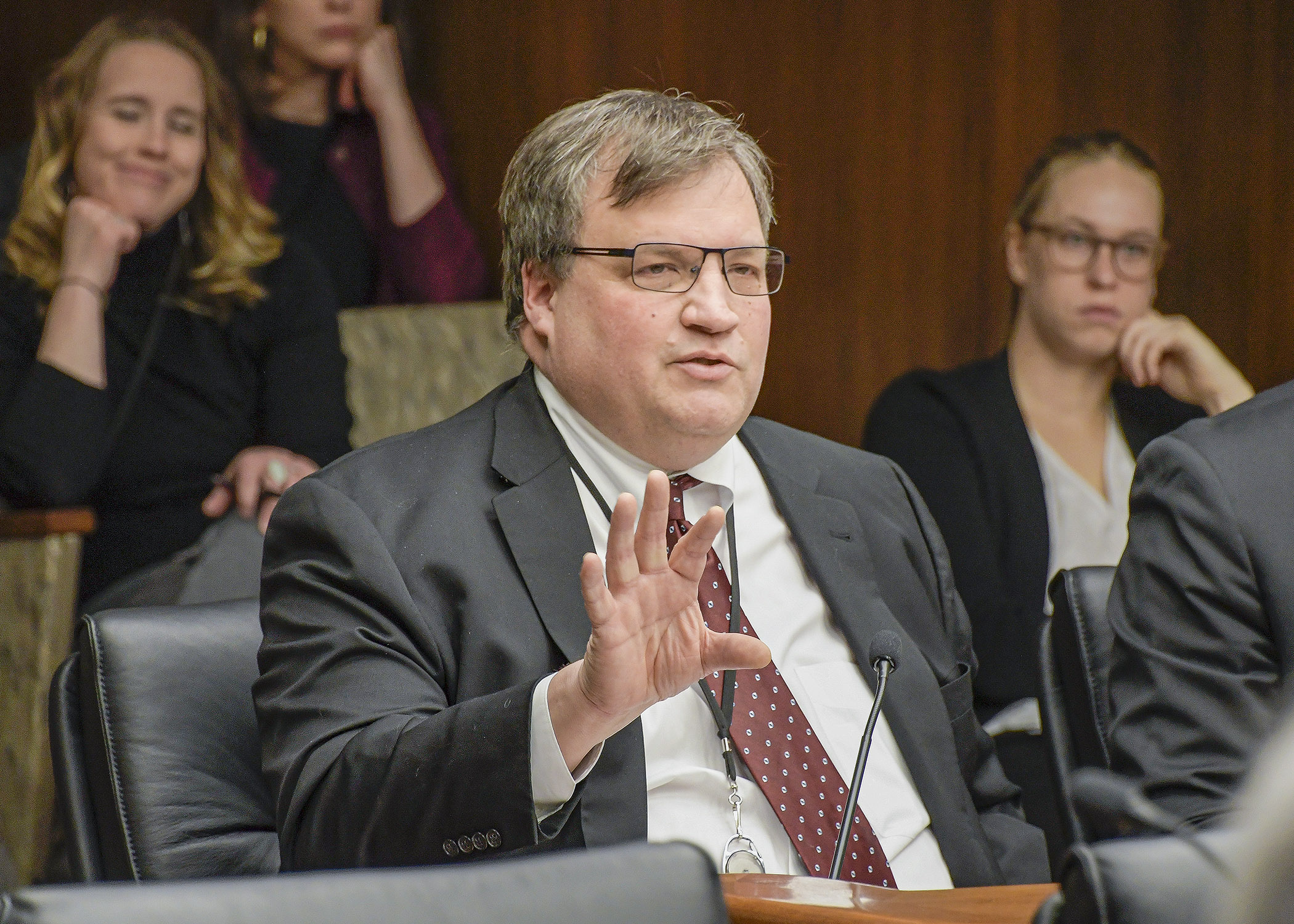Agriculture division discusses climate change at first 2020 hearing

The House Agriculture and Food Finance and Policy Division on Monday held its first hearing of 2020, an information-only meeting focused on the impacts of climate change on Minnesota agriculture and what is being done to address the issue.
Rep. Jeanne Poppe (DFL-Austin), the division chair, said the hearing would help get people “on the same page” about what is being, and can be, done. No action was taken.
“In 2019, we had some extreme weather from the very beginning,” Poppe said, citing collapsed barns during the winter followed by the wet spring and “unusual” summer.
Division members heard from a number of state officials who discussed the impacts of climate change on agriculture and best practices that can mitigate the damage being done.
The Department of Agriculture led off the discussion by detailing some of the challenges facing the state’s farmers. Commissioner Thom Peterson said 2019 was the state’s wettest on record and farmers reported a total of 1.17 million “prevented plant acres” – land where an insured crop was not planted due to flood, drought, etc. – which was sixth most in the nation.
“We’re holding a lot of water, really across the state right now,” Peterson said.
On the bright side, however, he said there is an increasing interest in using cover crops such as oats, which lessen soil erosion and runoff, but also help capture carbon rather than releasing it into the atmosphere.
“Everybody is excited about cover crops, I’m excited about cover crops,” Peterson said, adding that a shortage of seeds for some cover crops now poses a challenge. He said the department is working to help more farmers begin using cover crops, while also developing better markets for them, and that growing interest in hemp is also a cause for optimism.
“When we think about these different crops that are coming … that’s one of the things that gives me hope,” Peterson said.
The department also highlighted several programs available to help farmers:
- Minnesota Agricultural Water Quality Certification Program;
- Agricultural Best Management Practices Loan Program;
- AGRI Sustainable Agriculture Demonstration Grant Program;
- USDA Specialty Crop Block Grants; and
- Forever Green Initiative.
Officials from the Pollution Control Agency and Board of Soil and Water Resources also appeared before the division to discuss their organizations' climate change efforts.
Angie Becker Kudelka, an assistant director with BWSR, said the work it does with local organizations and private landowners to better Minnesota’s land and water benefits the climate as well, and that with about 75 percent of the state’s land in private ownership, local participation is needed if significant progress is going to be possible.
“Most agriculture best management practices that improve soil and water quality health, also help improve climate change,” she said.
BWSR released a Climate Change Trends and Action Plan in 2013, and released an updated version in September 2019.
Becker Kudelka said the two leading indicators of climate change in Minnesota are the state’s warmer winters and the increase in extreme rainfall events over recent years.
Those events impact agriculture in a number of ways. More frequent heavy rains will cause greater crop damage, soil erosion and runoff of fertilizers, pesticides and sediment. Drainage infrastructure, stormwater management, and manure storage and application will also be impacted, as will land, buildings and roads subject to flash flooding.
The BWSR presentation outlined some of its key strategies, including:
- restoring resilient landscapes;
- restoring soil health;
- effective water management treatment and use;
- collaborating with communities to increase resiliency of landscape; and
- green infrastructure and urban forests.
Becker Kudelka said BWSR understands that owners need options to best manage their land.
“We understand that there isn’t just one solution,” she said.
The division is scheduled to reconvene Monday afternoon for additional testimony.
Related Articles
Search Session Daily
Advanced Search OptionsPriority Dailies
Ways and Means Committee OKs proposed $512 million supplemental budget on party-line vote
By Mike Cook Meeting more needs or fiscal irresponsibility is one way to sum up the differences among the two parties on a supplemental spending package a year after a $72 billion state budg...
Meeting more needs or fiscal irresponsibility is one way to sum up the differences among the two parties on a supplemental spending package a year after a $72 billion state budg...
Minnesota’s projected budget surplus balloons to $3.7 billion, but fiscal pressure still looms
By Rob Hubbard Just as Minnesota has experienced a warmer winter than usual, so has the state’s budget outlook warmed over the past few months.
On Thursday, Minnesota Management and Budget...
Just as Minnesota has experienced a warmer winter than usual, so has the state’s budget outlook warmed over the past few months.
On Thursday, Minnesota Management and Budget...